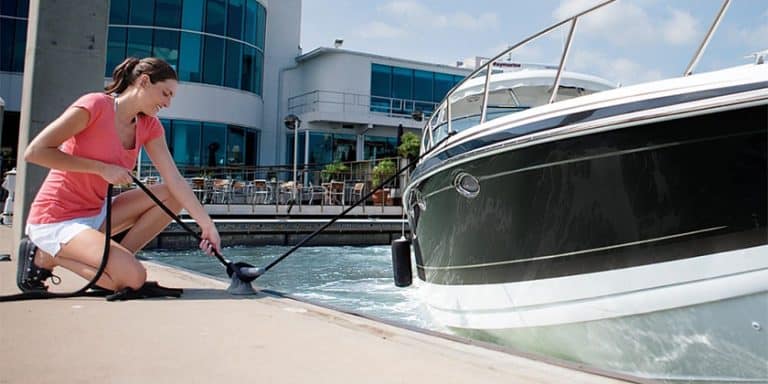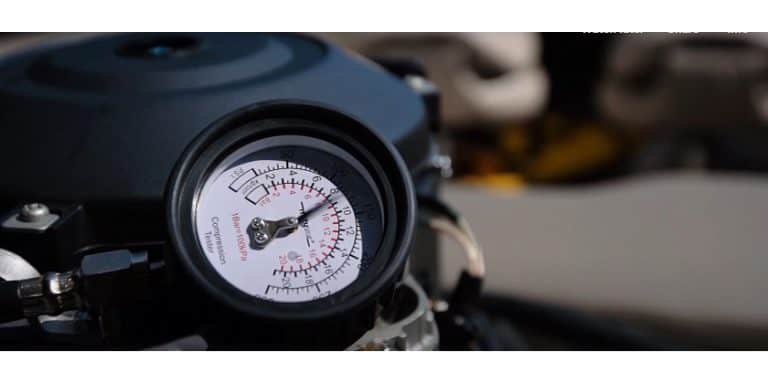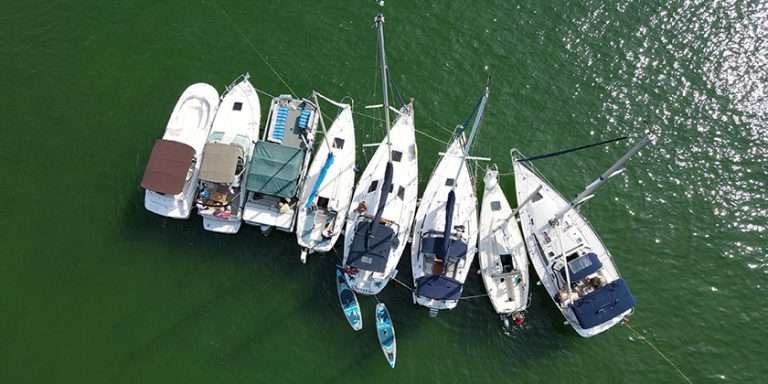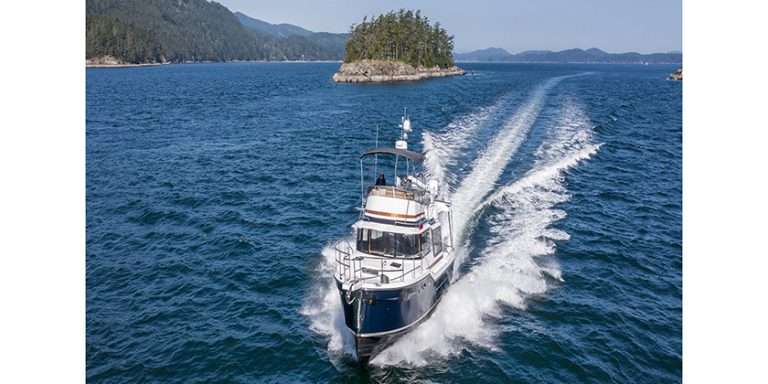Top Dead Centre

By: Doug Dawson
Positioning the Wheel
‘Top dead centre’ is the position of the wheel that allows you to steer your boat straight with no back and forth movement of the wheel. When the boat is moving straight, your drive(s) or rudder(s) is(are) straight.
Positioning your wheel to steer straightcompensates for and overrides all the torque, prop walk, skeg, rudder size, and other ‘tech stuff.’ You don’t have to worry about any of that. It is all compensated for by locating ‘top dead centre’on your wheel on all drive systems.
Do you understand, and could you explain technically, how your car’s ABS brakes work? Not likely. You just know that your car will stop straight when you stomp on the brake pedal!
The tiller on a sailboat is connected directly to the rudder, as is the handle on a tiller-operated outboard fishing boat. A quick glance will tell you whether it is straight or not. However, when sitting at the wheel on inboards and sterndrivesyou don’t know whether they are straight or not.
Why is it important?
When docking your boat, it is very important to know where ‘top dead centre’ is so that you know exactly where your boat is going to go within the confines of the fairway and slip. When you shift gears within your slip, you want your boat to head in the direction you expect—no surprises, no disappointments.
Here is a simple tip that will help you bring the wheel back to ‘top dead centre’ when docking, so that when you are in neutral and coasting, or when you return to forward, you are going straight ahead, or when you return to reverse, you are going straight back. This is a necessity when docking.
How can you find it?
Here is the easiest and simplest way to find ‘top dead centre’ on your wheel:
• On a perfectly calm day in open water, set both motors at exactly the same rpm, say 800 (If the wind never stops blowing, just aim directly downwind at a landmark)
• Idle toward a landmark on the shoreline
• Adjust the wheel slightly until the boat is tracking perfectly straight
• Mark ‘top dead centre’ of the wheel with a piece of black electrical tape
• Once you have ‘top dead centre’ marked on your wheel, use it to recover your straight ahead direction after executing a tight turn in tight quarters in the harbour or at your slip, rather than counting two and a half turns (or whatever) back from hard over
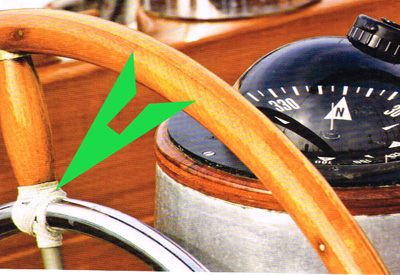 How I do it
How I do it
When I dock a boat, I place my left hand on the wheel at ‘top dead centre’ and never remove it(mentally, duct tape your left hand to the electrical tape spot on the wheel). I run the shift(s) with my right hand and ‘palm’ the wheel with my left hand (not hand over hand). Then my hand is always in the same spot. As I put it, my left hand “remembers” where it has to come back to, to steer straight. It may be one or two full turns, or part of a turn, depending on how many rotations I had previously turned.
When it is windy, I turn the wheel toward the wind one-eighth or one-quarter turn, depending on how windy it is, to counteract the force of the wind to keep going straight (lean into the wind).
On boats with dual helms (flybridge and cabin) with wheels that don’t turn at the same time, I leave the wheel centred each time I leave. Then, when I return to that helm, I know I am starting from ‘top dead centre.’ When our grandkids or guests are aboard, I have to check each time because they love to turn the wheel.
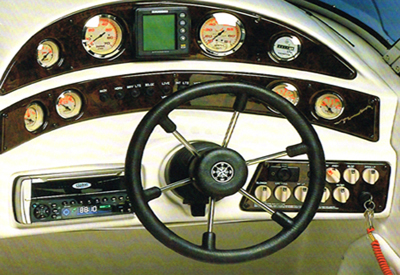 New Idea?
New Idea?
You may think this is a new idea, but far from it. Way before my great, great grandfather was building boats on the Thames in London, England, Captains devised a method of marking ‘top dead centre’ on the wheels of sailing ships, ocean going freighters, and cruise ships.Back then, the wheels were wooden with spokes. One method was to splice a cord donut and pull it tightly over the spoke of the ship’s wheel that was ‘top dead centre.’
In the picture, a cord is wrapped and tied around the top interior spoke. On some ships, that spoke was made of a different coloured wood than all the other spokes. Other ship’s wheels had extra grooves on the top spoke when turned in the lathe. As a result, the helmsman could feel the ‘top dead centre’ spoke. Whoever the helmsman was, he knew which spoke had to be up to be sure the rudder was dead straight and he was steering straight.
You may be more familiar with the dimples on a calculator or a keyboard or phone that let you know your fingers are in the right place.
Today, the wheels on recreational boats are round with no markings. The support bars don’t necessarily mean anything, as far as steering straight is concerned. I have suggested black electrical tape, because to other people it is invisible and disappears. Nobody sees it but you (unless you point it out), not even “the old salty know-it-all from down the dock.”
You may have an idea for something more elaborate to help you instantly identify ‘top dead centre.’ Go for it!
Try it and let me know how much easier docking is for you.


